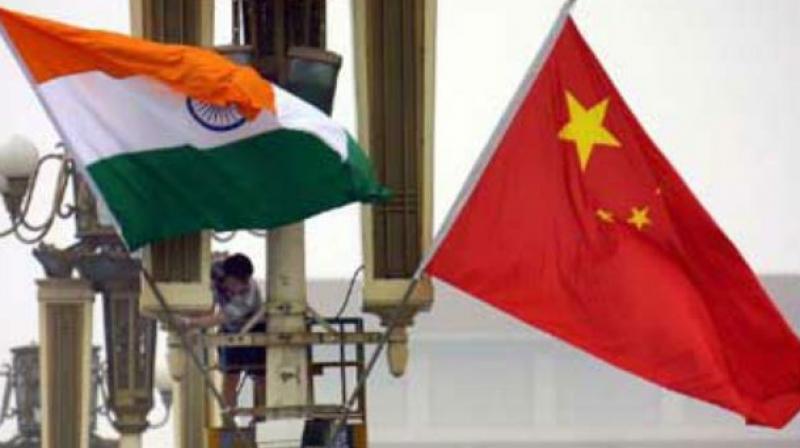India: A hurdle for China's ambitions
China is trying hard to be the world topper. While it is easy to bag that position, it is difficult to hold on to it for long.;

China, at present, is way ahead of India and the Western developed countries — which includes the UK, France, Germany, Italy, Spain, Portugal, Belgium and Netherlands sans the United States. There’s no doubt that India is way behind and does not figure in economic development list of the “first five”. And there is nothing to suggest that things would be any different in foreseeable future. So does it imply that crashing of the sky on India’s head? Why is there a constant melancholic cacophony by a club of self-appointed, self-deprecating Indians to show India in poor light? When was India in top league? Or an aspirant thereof during last 70 years? However, is there any need for India to try to be a world topper? Instead of being an instant topper, India should try to remain amongst top five countries in the world. While this view may not find many takers, let it be explained and elaborated with two (recent) public statements of China. First instance could be when China’s state-run daily warned about “third country Army” entering Jammu and Kashmir at Pakistan’s behest. The second boastful babbling came thereafter from no less than China’s foreign ministry, expressing its willingness to play “a constructive role” in improving Indo-Pak bilateral talks.
One wonders as to why China’s interfering in India’s internal affairs? Or why is it meddling between India and Pakistan? Surely there is more than what meets the eye. There’s an element of exasperation in its statement: “The situation in J&K has attracted the attention of the international community”. It is not too difficult to unscramble the Chinese semantics here. “International community” consists of only China and the Chinese. Indeed, this profound sermon with a “holier than thou” attitude appears ludicrously hollow and duplicitous. The wordplay appears a monumental act of misdirected energy. In China’s eyes, it could look like discovery akin to Archimedes principle: “The Indo-Pak conflict that occurred along the Line of Control will not only harm peace and stability of the two countries but also the peace and tranquility of the region”. But is Indo-Pak conflict near J&K line of control something unique? Or unprecedented? Is China ignorant of the Kashmir saga? If China pretends to be a good samaritan between India and Pakistan on J&K, should a counter-offer be made by Delhi to play a “constructive role” to resolve the issues between China and Tibetan spiritual leader the Dalai Lama?
For the convenience of all, let the tale of two cities (Delhi and Beijing) be recaptured. Jammu and Kashmir acceded to India vide two legal documents — Instrument of Accession Act 1947 and Constitution of J&K, 1939. The entire process was voluntary, bona fide, legal and irrevocable. Tibet, on other hand, was forcibly captured, conquered, crippled, maimed from 1949 onwards by China. So much so that the head of Tibetan state had to seek refuge abroad following an aggressive, marauding Chinese Army, which ensured the completion of an illegal, non bona-fide, forced occupation of Tibet. In short, J&K acceded to India on its own volition. Tibet was captured and conquered by China against its wishes. Be that as it may, both India and China did not talk much on each other’s position and played by unspoken rule of bilateral, but only for a while. China’s aspiration and ambition soon took it to brinkmanship. Being enamoured of “achievements” of Western imperialists of the bygone era, China’s action underwent profound transformation — from pacifism of past to expansionism to the future.
The ambitious countries first achieved the slot and then resorted to machinations to cling on to the attained position for eternity. Deploy forces like the British did — from Falkland to Cape of Good Hope, from Gibraltar to Malta and from the Suez Canal to Singapore. Supplemented by raw material hunting and market-domination scheming. When the US replaced the UK as the superpower in the mid-20th century, they too did the same. Today, however, the scenario has changed, as China thinks that 21st century is the age ordaining it to be the first among the superpowers. Thus, it has first focused on economics (of internal infrastructure), followed by geography (of expansion), mineralogy (for raw materials), oceanography (for deployment), hinterland topography (for connection), “bullying-graphy” (for making neighbour capitulate into submission), psychology (of deception), violation of neighbour’s sovereignty through intervention, and without an iota of regret or an apology to prise open market for the overcapacity production of Chinese goods.
In the process, three types of Chinese plan emerge:
Semi-forward deployment (South China Sea and Indian frontier)
Forward deployment (Gwadar Port, Pakistan)
Ultra forward deployment (Djibouti, Africa).
China is trying hard to be the world topper. While it is easy to bag that position, it is difficult to hold on to it for long. China’s aggression towards India stems from its own insecurity as India could act as a spoilsport.

